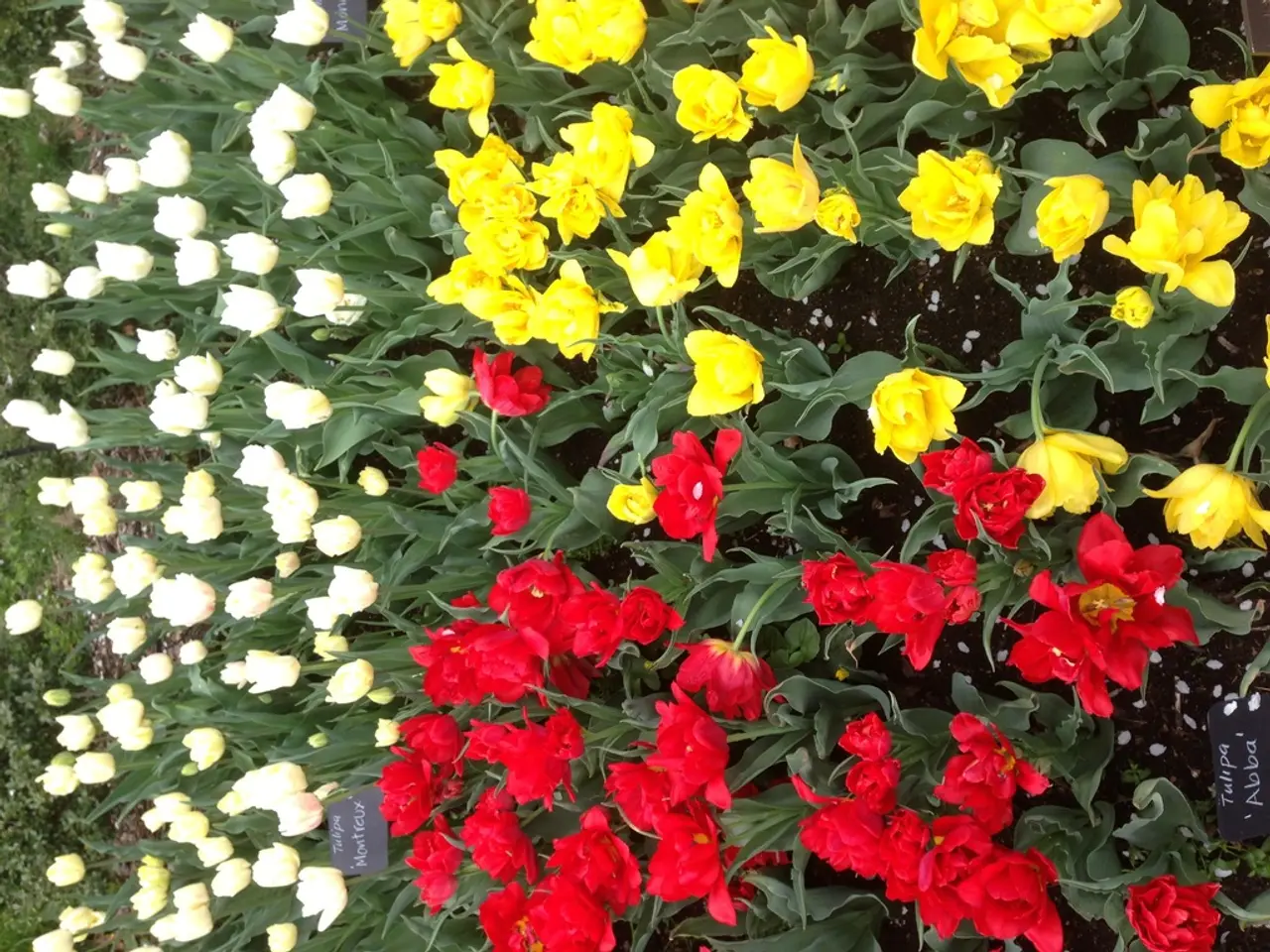Vibrant Lupins add Color to Your Summer Flower Garden
Lupins, also known as lupines, are a captivating group of flowering plants, renowned for their vibrant colours and unique leaf shapes. Here, we delve into some popular varieties and their distinctive characteristics.
## Popular Varieties of Lupins
1. **Russell Mixed Colours**: Bred by George Russell in 1937, these lupins are the foundation for many modern cultivars. Known for their vibrant colours, ranging from blues, pinks, to whites, these resilient plants naturalise well in various areas.
2. **Gallery Series**: Compact plants, growing no more than 2 feet tall, the Gallery Series boasts dense flower spikes. They come in a variety of colours, including the striking 'Gallery White'.
3. **'Dwarf Lulu'**: Standing at approximately 2 feet tall, these plants feature unusually dense racemes in a rainbow of colours.
4. **'Minarette'**: A dwarf variety, only 18 inches tall, 'Minarette' is ideal for borders or containers.
5. **Lupinus albus (White Lupine)**: This taller lupine grows up to 4 feet tall, showcasing white blossoms.
6. **Lupinus albifrons (Silver Lupine)**: Grows between 3 to 5 feet tall, with silver-green leaves and pale blue to purple flowers.
7. **Lupinus angustifolius (Blue Lupine/Narrowleaf Lupine)**: Reaching 5 feet tall, this variety is more commonly used for agricultural purposes, boasting blue blooms.
8. **Lupin 'Lupini Blue'**: A hardy perennial, this variety grows up to 40 cm tall with a spread of up to 30 cm, suitable for sun or semi-shade conditions.
9. **West Country Lupins**: Bred in Devon for better vigour, richer colours, and improved weather resistance, these are a newer range of lupins.
## General Characteristics
Lupins are characterised by their distinctive palmately divided leaves, often with 5 to 17 leaflets, which can be soft green, silvery, or hairy. The flowers are pea-like, with an upper 'standard', two lateral 'wings', and two lower petals fused as a 'keel', typically 1-2 cm long. Most lupins are herbaceous perennials, but some are annuals or shrubs, with varying heights depending on the species.
To grow lupins from seeds, sow them in spring, after nicking them with a knife and soaking them in water for 24 hours. Slugs and snails can damage young lupin growth, so it's essential to protect the plants. Lupins can be grown in pots, either as bedding in late spring or summer, or as a permanent plant.
The cucumber mosaic virus can attack lupins, causing yellow mottling on the leaves, distorted foliage, and stunted growth. Digging up and burning infected plants can help prevent the spread of the virus. North American lupin aphids are widespread in Britain and can cause the plant to wilt if left unchecked.
Lupins are popular in various planting schemes, including cottage gardens and traditional herbaceous borders. They flourish best in full sun, in an open situation, and in well-drained soil. After flowering, it's advisable to cut back the flower stems down to the base to prevent seed production and prolong the life of the plant.
Westcountry Lupins and Woottens of Wenhaston are two places to buy lupins. Lupins are perennial plants that flower in late spring and early summer. With their striking beauty and diverse range of varieties, lupins are a must-have for any garden enthusiast.
- The striking 'Gallery White' is part of the Gallery Series, a compact variety of lupins known for their dense flower spikes that thrive in gardens, mirroring the home-and-garden lifestyle of many enthusiasts.
- For those seeking smaller lupin varieties for borders or containers, the 'Minarette' and 'Lupin 'Lupini Blue' are suitable choices, fitting well within landscape designs.
- Lupin 'Lupini Blue' is a hardy perennial that grows in sun or semi-shade conditions, proving that these plants can adapt to diverse lifestyle preferences and spaces.
- The West Country Lupins, bred for better vigour, richer colours, and improved weather resistance, are an appealing option for those who favor local garden design trends.
- With their unique leaf shapes, vibrant colours, and diverse varieties, lupins are cherished plants in many gardens, adding a touch of floral elegance to various planting schemes, such as cottage gardens and traditional herbaceous borders.




